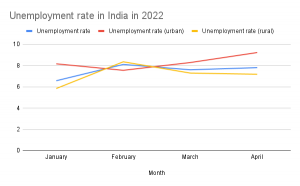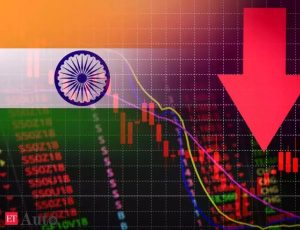DAILY CURRENT AFFAIRS (JUNE 7,2022)
THE ART AND CULTURE
1. TAMIL NADU SCULPTURES RECOVERED FROM AUSTRALIA, US
THE CONTEXT: Ten antiquities retrieved from Australia and the United States were handed over to the Government of Tamil Nadu in Delhi last week. A look at some of the returned antiquities, and how they had gone missing.
THE EXPLANATION:
- Ten antiquities (sculptures) retrieved from Australia and the United States were handed over to the Government of Tamil Nadu in Delhi last week. Union Culture Minister said at the event, “Bringing Our Gods Home is an initiative by the government that is rooted in preserving, promoting and propagating our heritage”. He said only 13 antiquities had been brought back to India between Independence and 2013, compared to 228 antiquities since 2014.
Some of the returned antiquities, and how they had gone missing: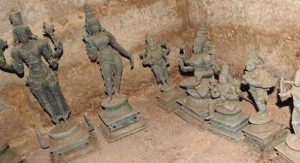
- Dvarapala: Retrieved in 2020 from Australia, this stone sculpture belongs to the Vijayanagar dynasty dating to the 15th-16th century. He is holding a gada in one hand and has another leg raised up to the level of his knee. The sculpture was burgled from Moondreeswaram udayar Temple, Tiruneveli in1994.
- Nataraja: Retrieved in 2021 from the US, this image of Nataraja, a depiction of Shiva, in his divine cosmic dance form, is in tribhanga posture, standing on the lotus pedestal. It is dateable to the 11th-12th century. Possibly, anandatandava or the Dance of Bliss is portrayed here. The sculpture was burgled from the strong room of Punnainallur Arulmigu Mariyamman Temple, Thanjavur, in 2018.
- Kankalamurti: Retrieved in 2021 from the US, Kankalamurti is depicted as a fearsome aspect of Lord Shiva and Bhairava. The sculpture is four-armed, holding ayudhas such as damaru and trishula in the upper hands and a bowl and a trefoil shaped object, as a treat for the playful fawn, in the lower right hand. The idol is dateable to the 12th-13th century, and was stolen from Narasinganadhar Swamy Temple, Tirunelveli in 1985.
- Nandikeshvara: Retrieved in 2021 from the US, this bronze image of Nandikeshvara, dateable to the 13th century, is shown standing in tribhanga posture with folded arms, holding an axe and a fawn in the upper arms, with his forearms in namaskara mudra. This sculpture was stolen from Narasinganadhar Swamy Temple, Tirunelveli, in 1985.
- Four-armed Vishnu: Retrieved in 2021 from the US, dateable to the 11th century, and belonging to the later Chola period. The sculpture has Lord Vishnu standing on a padma pedestal holding attributes such as shankha and chakra in two hands; while the lower right hand is in abhaya mudra. It was stolen from ArulmiguVaradharaja Perumal Temple, Ariyalur, in 2008.
- Goddess Parvati: Retrieved in 2021 from the US, the image depicts a Chola-period sculpture dateable to the 11th century. She is shown holding a lotus in the left hand whereas the right is hanging down near her kati. This sculpture was also stolen from ArulmiguVaradharaja Perumal Temple, Ariyalur in 2008.
- Standing child Sambandar: Retrieved in 2022 from Australia. Sambandar, the popular 7th-century child saint, is one of the Muvar, the three principal saints of South India. The sculpture is dateable to the 11th century. The legend goes that after receiving a bowl of milk from Goddess Uma, the infant Sambandar devoted his life to composing hymns in praise of Lord Shiva. The sculpture displays the saint’s childlike quality, while also empowering him with the maturity and authority of a spiritual leader. It was stolen from Sayavaneeswarar Temple, Nagapattinam, between 1965 and 1975.
2.WHO WAS SANT KABIR, THE EXTRAORDINARY POET-SAINT OF THE BHAKTI MOVEMENT?
THE CONTEXT: During his address at the Kabir Chaura Dham, President said, “The life of Kabir is an epitome of human virtue and his teachings are relevant today even after 650 years. Kabir’s life was an ideal example of communal solidarity.”
THE EXPLANATION:
- The Bhakti movement, which began in the 7th century in South India, had begun to spread across north India in the 14th and the 15th centuries. The movement was characterized by popular poet-saints who sang devotional songs to God in vernacular languages, with many preaching for the abolishing the Varna system and some kind of Hindu-Muslim unity. They emphasized an intense emotional attachment with God.
- One school within the Bhakti movement was the Nirguni tradition and Sant Kabir was a prominent member of it. In this tradition, God was understood to be a universal and formless being.
- Many of the saints of the Bhakti movement came from the ranks of the lower to middle artisanal classes. Kabir was a ‘low caste’ weaver (Julaha), Raidas was a leather worker and Dadu a cotton carder.
- Their radical dissent against orthodoxy and rejection of caste made these poet-saints extremely popular among the masses and their ideology of egalitarianism spread across India.
- Kabir’s compositions can be classified into three literary forms – dohas (short two liners), ramanas (rhymed 4 liners), sung compositions of varying length, known as padas (verses) and sabdas (words).
- Kabir is in modern times portrayed as a figure that synthesized Islam and Hinduism. In many of the popular bhajans associated with him today, his strong dissent towards religion is somewhat muted, according to religious studies scholar David Lorenzen. While he did borrow elements from different traditions, he very forcefully proclaimed his independence from them.
- He did not only target the rituals and practices of both Hinduism and Islam, but also dismissed the sacred authority of their religious books, the Vedas and the Quran. Kabir did use the name Rama in his poems, but he clarified that he was not referring to the avatar of Vishnu, but a formless and general Hindu name for the divine. Author Manu S Pillai writes that he even combined Allah and Ram.
- Kabir’s revolt against the caste system also sought to do away with the complex rituals and ceremonies performed by the Brahmins. He, like the other prominent saints of his time, argued that it was only through bhakti, intense love or devotion to God could one attain salvation.
- In many of his verses, Kabir proclaimed that people of all castes have the right to salvation through the bhakti tradition.
THE SOCIAL JUSTICE
3. COVID RAISED INEQUALITIES — BY HOW MUCH?
THE CONTEXT: At the recent World Economic Forum conference in Davos, the exclusive get-together of the global elite, in May, Oxfam released its new report titled ‘Profiting from Pain’ that illustrates how the Covid pandemic caused havoc to millions across the globe and how the already persisting inequality on this planet just got intensified by the once-in-a-century pandemic.
THE EXPLANATION:
- Some catchy figures in the above-mentioned report immediately drew headlines all over the world. For example, along with 40 new pharma billionaires, a whopping 573 people became new billionaires during the pandemic, at the rate of one every 30 hours.
- In fact, the number of billionaires has increased more than 27 per cent since the pandemic started. The billionaires of the world own $3.78 trillion more, up nearly 30 per cent, from 2020. And the world’s 10 richest men own more wealth than the bottom 3.1 billion people. Rising income inequality had been observed through Gini index.
- Significantly, for every new billionaire created during the pandemic, nearly a million people could have been pushed into extreme poverty in 2022 every 33 hours — nearly the same rate, as is portrayed in the Oxfam report. Specifically, it was estimated that 263 million more people will crash into extreme poverty this year.
- The Oxfam report says that billionaires’ wealth rose more in the first 24 months of Covid than in 23 years. And corporations in the energy, food, and pharmaceutical sectors are experiencing record-high profits. As the cost of essential goods rises faster than it has in decades, billionaires in the food and energy sectors increased their fortunes by $1 billion every two days during the pandemic period.
- Well, there is no denying that global inequality was widened by the pandemic — the rich became richer while millions lost jobs. In fact, a few months ago, the World Inequality Report 2022, prepared by the World Inequality Lab at the Paris School of Economics, also portrayed a grim picture of widened global inequality.
- In fact, in many countries, no official income data is available. Incidentally, the last available consumer expenditure survey data in India is about a decade old. One may certainly wonder how the income distributions of these countries are at all estimated in these worldwide inequality calculations.
- If some data from some privately organised surveys are used, there would always be room for doubting that. Different organisations certainly use a lot of auxiliary data with bunches of unrealistic assumptions while measuring the income distribution of a country.
- Governments of different countries injected millions of dollars into their economies as stimulus during the Covid pandemic, significant money has been invested to develop and distribute vaccines, and near- zero-interest loans were given.
- And there is little doubt that, in many places, the rich became richer — the number of yachts increased, not the boats. And the economic recovery in many countries is observed to be K-shaped, indeed. It was possibly destined to be so. Some experts knew that apriori though.
THE POLITY AND GOVERNANCE
4. TAKING STEPS TO ENSURE SEX WORKERS’ RIGHTS
THE CONTEXT: Recently, in Budhadev Karmaskar v. State of West Bengal & Ors, while issuing interim directions to States and Union Territories, the Supreme Court re-asserted that sex workers and their children cannot be deprived of their right to live with dignity and human decency. The court said that notwithstanding the profession, every individual in this country has the right to a dignified life.
THE EXPLANATION:
- The court’s directions are nothing, but the recommendations made by the panel constituted by the Supreme Court in July 2011 and headed by a senior advocate, Pradip Ghosh, with regard to“conditions conducive for sex workers who wish to continue as sex workers to live with dignity in accordance with the provisions of Article 21 of the Constitution of India”.
- Since the Government of India had certain reservations about four of the 10 recommendations of the panel, the court directed the government to implement the other six recommendations as well as the provisions of the Immoral Traffic (Prevention) Act (ITPA) of 1956. These are: to provide immediate medical assistance to sex workers who are victims of sexual assault; to release adult sex workers detained in ITPA protective homes against their will; to sensitise the police and other law-enforcement agencies about the rights of sex workers to live with dignity; to ask the Press Council of India to issue guidelines to the media so that they don’t reveal the identities of sex workers while reporting on arrest, raid and rescue operations; to not consider health measures that sex workers employ for their safety (such as condoms) as evidence of commission of an offence; and to ensure that the legal service authorities of the Central and State governments educate sex workers about their rights vis-à-vis the legality of sex work.
- A provision is already available in the Code of Criminal Procedure (CrPC) on providing medical assistance to sex workers who are victims of sexual assault. However, the law is silent about not revealing the identity of sex workers. Similarly, though an order to send the sex worker to a protective home is passed by a magistrate after due inquiry about her need of care and protection, the ITPA and CrPC may be amended suitably to enforce the directions of the Supreme Court. Other directions may be implemented through executive orders by the governments.
- It is noteworthy that carrying on sex work outside the notified areas or outside a distance of 200metres of any place of public religious worship, educational institution, hospital, etc. is not punishable under the ITPA. The irony is that when the essential ingredient of sex work is ‘sexual exploitation’ or ‘abuse of persons’ for commercial purpose, how can this be allowed anywhere? Therefore, now with the court’s directives on the anvil, it will be apposite for the government to differentiate between prostitution and the work of sex workers and consider banning prostitution per se and allowing voluntary sex work with certain conditions keeping in mind the public interest.
- It is not disputed that women in the flesh trade should be viewed more as victims of adverse socioeconomic circumstances rather than as offenders. However, with all our laws and policies, we as a society have failed to contain prostitution.
- Therefore, the government may now use the Supreme Court’s directions as an opportunity to improve the conditions of sex workers and their surrounding environment, facilitate rehabilitation, and remove the various ambiguities and inconsistencies in the applicable laws and bring about clarity.
THE INTERNATIONAL RELATIONS
5. A ‘SILVER’ MOMENT TO PROPEL A BAY OF BENGAL DREAM
THE CONTEXT: June 6 marked the completion of 25 years since the 1997 Bangkok Declaration launched a modest grouping (of Bangladesh, India, Sri Lanka and Thailand), with the acronym, BIST-EC. Three countries (Nepal, Bhutan and Myanmar) joined it later to make it the Bay of Bengal Initiative for Multi-Sectoral Technical and Economic Cooperation (BIMSTEC).
THE EXPLANATION:
- This unique set of five countries from South Asia and two from Southeast Asia are parents to an institution with an unwieldy name but lofty ambitions. It is the parents’ responsibility that the 25-year-old offspring, now a full adult, begins taking strides to achieve the goals set before it.
- BIMSTEC has several achievements to its credit. It has crafted a new Charter for itself, spelling out the grouping’s vision, functions of its constituent parts, and has secured a legal personality. It has prioritised the sectors of cooperation, reducing them from the unwieldy 14 to the more manageable seven, with each member-state serving as the lead country for the assigned sector. It has, finally, taken measures to strengthen the Secretariat, although some members are yet to extend adequate personnel support to it.
- Above all, its success lies in its survival through the turns and twists of internal tensions. The BIMSTEC region witnessed the influx of over a million Rohingya refugees into Bangladesh, the result of oppression by the Myanmar military; the coup in Myanmar that led to its virtual boycott by a large segment of the international community; and the grave political and economic crisis afflicting Sri Lanka.
- Unlike the South Asian Association for Regional Cooperation, post-2014, BIMSTEC has continued to hold its summits and meetings of Foreign Ministers. Unlike the Indian Ocean Rim Association (IORA) which held only one summit since its establishment in 1997, BIMSTEC has succeeded in holding five summits so far; it has now resolved to hold regular summits once in two years.
- The grouping has also registered progress in combating terrorism, forging security cooperation, and creating mechanisms and practices for the better management of humanitarian assistance and disaster relief.
- A whole basket of memoranda of understanding, agreements and legal instruments provide the foundation for developing functional cooperation in select areas such as agriculture, trade, sustainable development and connectivity. Institutions such as an Energy Centre and the Centre on Weather and Climate are in place to push sectoral cooperation forward.
- A fair balance sheet must factor in the shortfalls and the gaps between ambition and action. A major failure relates to the continuing inability to produce a comprehensive Free Trade Agreement (FTA) 18 years after the signing of the Framework Agreement. Official sources concede that of the seven agreements needed to operationalise the FTA, only two are “ready” — a disappointing record. What is worse is that the highest political leaders, in their summit declarations, continue to “direct” ministers and officials to expedite action, but, alas, with little impact. Heads of state and government need to assert their authority or abandon the FTA as an unachievable goal.
- The other disappointment is connectivity — in infrastructure (roads, railways, air, river, and coastal shipping links), energy, the digital and financial domain, and institutions that bring people closer together for trade, tourism and cultural exchanges. Only limited progress has been achieved so far, despite the adoption of the Master Plan for Connectivity supported by the Asian Development Bank (ADB).
- Much of the connectivity established recently is the outcome of bilateral initiatives taken by India, Bangladesh, Nepal and Bhutan to strengthen transport links. Mega-projects aimed to improve connectivity between India and Myanmar (and Thailand) have been delayed inordinately.
- For greater regional connectivity, more financial resources are needed. The movement towards establishing the BIMSTEC Development Fund is minimal. The grouping has talked about the Blue Economy but is yet to begin any work on it. Business chambers and corporate leaders are yet to be engaged fully with the activities of BIMSTEC.
- This leaves the grouping largely in the hands of officials and experts. The involvement of the ‘Third Space’ needs to be expanded significantly.
- An objective evaluation may award an A- to BIMSTEC@25, with the remark that it must do better. An exciting destiny awaits it as it works to realise the vision of the Bay of Bengal Community (BOBC). In this Indo-Pacific century, the BOBC has the potential to play a pivotal role, deepening linkages between South Asia and Southeast Asia.
- It should accelerate the region’s economic development by collaborating with the newly minted Indo-Pacific Economic Framework for Prosperity (IPEF). New synergy should be created between BIMSTEC and the IPEF.
- Finally, while all member-states are equal, three have a special responsibility: Bangladesh as the host of the BIMSTEC Secretariat; Thailand as the representative of Southeast Asia; and India as the largest state in South Asia. This trio must be the engine to pull the BIMSTEC train with imagination and determination.
- when operating in difficult terrain, unsafe operating environments and also bad weather.
THE SCIENCE AND TECHNOLOGY
6.THE NEED FOR DIGITAL COLLABORATION
THE CONTEXT: The fact that the University Grants Commission (UGC) has simplified its approval process for local universities to collaborate with their counterparts abroad, to offer joint degrees, dual degrees, and twinning programmes, is heartening.
THE EXPLANATION:
- As per the rules, any Indian Higher Education Institution (HEI) accredited by the National Assessment and Accreditation Council with a minimum score of 3.01 on a 4-point scale or featuring in the top 1,000 of the Times Higher Education or QS World University Rankings will be eligible to participate in the collaboration.
- For Indian institutes, being in the top 100 list of the National Institute Ranking Framework is also an acceptable criterion. Foreign institutes willing to enter a partnership must rank in the top 1,000 in either of the two world university rankings.
- While multiple steps taken by the present dispensation to meet the unprecedented challenges posed by the pandemic include leveraging the potential of information and communication technology in the teaching and learning process, the fact that the UGC’s regulations do not allow academic collaboration with foreign institutions for online learning and open and distance learning (ODL) is puzzling.
- In order to increase the gross enrolment ratio in HEIs in India, the National Education Policy of 2020 suggested that more ODL and online programmes be started, especially to improve access for those living in remote areas. ODL programmes impart education to people for whom the regular mode of learning is a distant dream owing to financial, personal and professional constraints. Often, part-time employees in both the organised and unorganised sectors are the ones who opt for ODL in order to upgrade their qualifications for better career prospects.
- At the postgraduate, undergraduate, PG Diploma, Diploma, and Certificate levels, the share of distance enrolment in university is 13.8%, 35.9%, 1.1%, 1.5% and 0.4%, respectively (All India Survey on Higher Education, or AISHE, 2019-2000). Distance enrolment constitutes 11.1% of the total enrolment in higher education. These programmes are more affordable compared to the in-person programmes and are therefore popular among disadvantaged sections.
- In order to promote online education in India, initiatives such as MOOCs, SWAYAM and NPTEL are sponsored by the UGC, the Department of Education, and other national institutes of repute. Of late, universities and colleges are centrally funded under the RUSA and TEQIP-III programmes to create and strengthen infrastructure for online and digital education. The Union Budget too announced the establishment of a digital university.
- It is inexplicable, therefore, that while online education is being encouraged on the one hand through several government initiatives, online programmes are being kept out of the ambit of international collaboration efforts by the UGC on the other.
- According to AISHE’s findings, 49,348 international students from 168 countries are enrolled in courses offered by Indian universities. The highest share of foreign students (45.6%) come from four neighbouring nations: Nepal, Afghanistan, Bangladesh and Bhutan.
- Reaching out to the HEIs of such countries for international collaboration, notwithstanding their present standing and rank, will pave the way for an increase in the footfall of international students in India. This may especially prove to be a game changer for the financially constrained HEIs. Also, it will help to compensate the outflow of foreign exchange from India.
- The allocation of grants to central universities has risen to ₹9,420 crore from ₹7,643.26 crore last year in higher education. Monetary support to the IITs has increased by ₹658.9 crore and to the IIMs by ₹177.9 crore in 2022-23 compared to last year.
- These institutions, generously funded by the Centre, outplay their State-sponsored counterparts in other academic indicators too, such as faculty strength and modernised laboratories and libraries. Hence, that State-funded HEIs do not perform well in the ranking system is no surprise. Now, their chances for smooth international collaboration is also impeded by the UGC regulations. This will only exacerbate the divide between central and State institutes.
- The UGC needs to revisit its policies for foreign collaborations. It must look at the present and overall needs of the education system so that students studying in State-sponsored HEIs and opting for ODL and online education are not deprived of benefits in India.
THE PRELIMS PRACTICE QUESTIONS
QUESTION FOR 7TH JUNE 2022
Q1. Which of the following statement is incorrect about Organization of Islamic Countries (OIC)?
a) It was established in 1969.
b) It has total 57 member countries.
c) Its headquarter is located in Abu Dhabi, UAE.
d) India is not a member of OIC.
ANSWER FOR THE 6TH JUNE 2022
Answer: A
Explanation:
- Change-4 – Moon probe of China
- Tianwen-1 – Mars probe of China
- Tiangong-1 – Space station of China


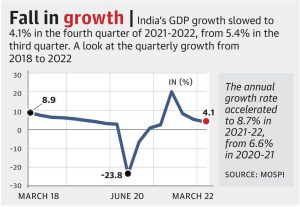
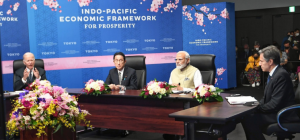


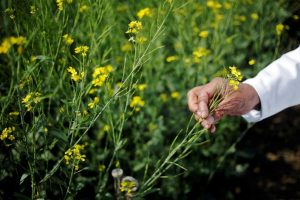


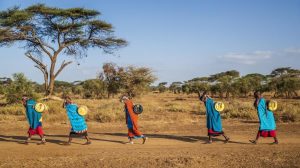
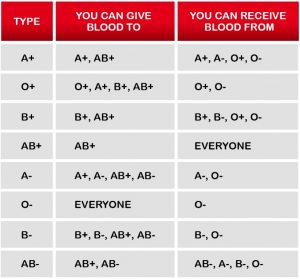




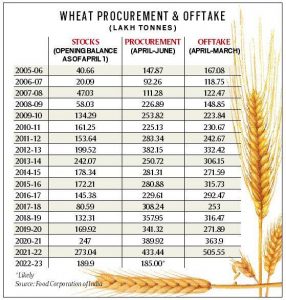
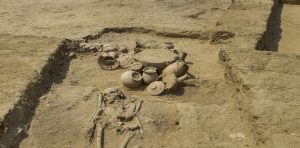
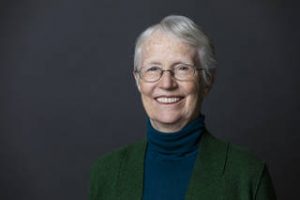
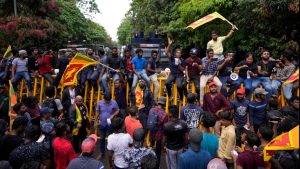

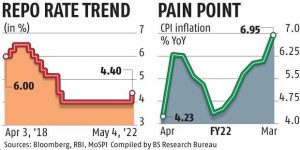

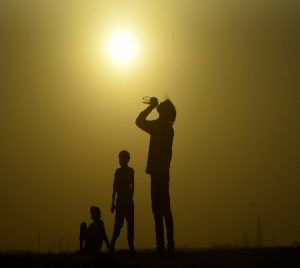
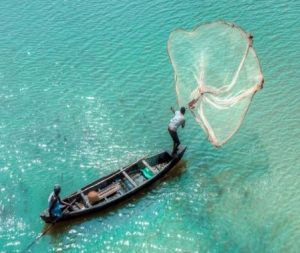

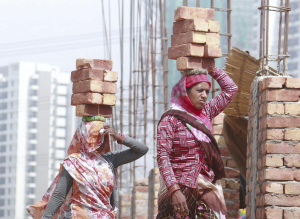
 THE EXPLANATION:
THE EXPLANATION: THE CONTEXT: India’s unemployment rate rose to 7.83% in April from 7.60% in March, according to the recent data released by the Centre for Monitoring Indian Economy (CMIE).
THE CONTEXT: India’s unemployment rate rose to 7.83% in April from 7.60% in March, according to the recent data released by the Centre for Monitoring Indian Economy (CMIE).